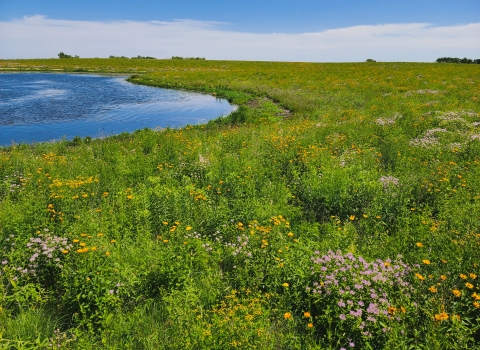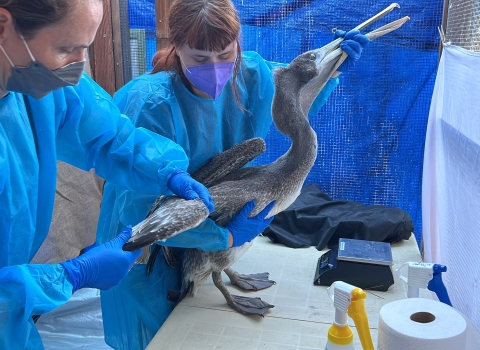HELENA – A new, voluntary wildlife conservation opportunity designed with Montana ranchers in mind is now open for public comment, and the benefits to five species of birds in need could be remarkable.
Interested landowners will receive regulatory certainty for the next 20 years through a Programmatic Candidate Conservation Agreement with Assurances (CCAA), a proactive conservation mechanism available under the Endangered Species Act that is designed to benefit species at-risk of needing federal protection. Working in partnership with the U.S. Fish and Wildlife Service and The Nature Conservancy, participants in the CCAA would voluntarily take steps to conserve the Sprague’s pipit, McCown’s longspur, chestnut-collared longspur, Baird’s sparrow and greater sage-grouse on their property while conducting their general business activities.
This proposed CCAA is part of a broader effort to expand wildlife conservation opportunities, preclude the need to list species, and strengthen public/private partnerships. Here’s how it works: First, landowners work with the organizations to determine which conservation measures can be applied on their property for the duration of the 20-year agreement. Then, in the event any of the five covered species were to require protection under the Endangered Species Act while the CCAA is in place, The Nature Conservancy would provide landowners with a permit allowing incidental take (harm, harassment or death) of any of the species as a side effect of general activities. In the event of a listing, no additional conservation measures or land and water use restrictions would be required by participating landowners during the agreement.
Working Montana rangelands play a critical role in maintaining the interconnected web of sagebrush sagebrush
The western United States’ sagebrush country encompasses over 175 million acres of public and private lands. The sagebrush landscape provides many benefits to our rural economies and communities, and it serves as crucial habitat for a diversity of wildlife, including the iconic greater sage-grouse and over 350 other species.
Learn more about sagebrush and grassland habitats that many of America’s plants and animals rely upon. However, loss and degradation of these systems due to development and other factors has led to declines in wildlife populations, making grassland birds one of America’s fastest declining groups of species.
Privately owned lands in Montana provide the large, intact habitats the five bird species need to survive. Approximately 66 percent of sagebrush and 63 percent of grassland habitats in Montana are privately owned, and 56 percent of Montana’s known and active greater sage-grouse leks are found on private rangelands.
Members of the public are invited to provide their comments until the comment period closes on October 25, 2017. Comments on all documents may be submitted via the following methods:
1. Email: MT_CCAA@fws.gov. Include “MT CCAA” in the subject line;
2. Fax: 406–449–5339, Attn: MT CCAA;
3. U.S. mail or hand-delivery to: Office Supervisor, Montana Ecological Services Field Office, U.S. Fish and Wildlife Service, 585 Shepard Way, Suite 1, Helena, MT 59601.
Voluntary conservation tools like CCAAs not only yield benefits on private lands, they also have a ripple effect onto state and federal lands. These types of collaborative conservation partnerships are essential to confront the threats to species survival, maintain the health of the nation’s lands, and preclude the need to list species under the Endangered Species Act.
For more information on the proposed Programmatic CCAA and EA, contact the Montana Ecological Services Field Office at (406) 449-5225.
The mission of the U.S. Fish and Wildlife Service is working with others to conserve, protect, and enhance fish, wildlife, plants, and their habitats for the continuing benefit of the American people. We are both a leader and trusted partner in fish and wildlife conservation, known for our scientific excellence, stewardship of lands and natural resources, dedicated professionals, and commitment to public service.
Connect with our Facebook page at http://www.facebook.com/USFWSMountainPrairie, follow our tweets at http://twitter.com/USFWSMtnPrairie, watch our YouTube Channel at http://www.youtube.com/usfws and download photos from our Flickr page at http://www.flickr.com/photos/usfwsmtnprairie/.


